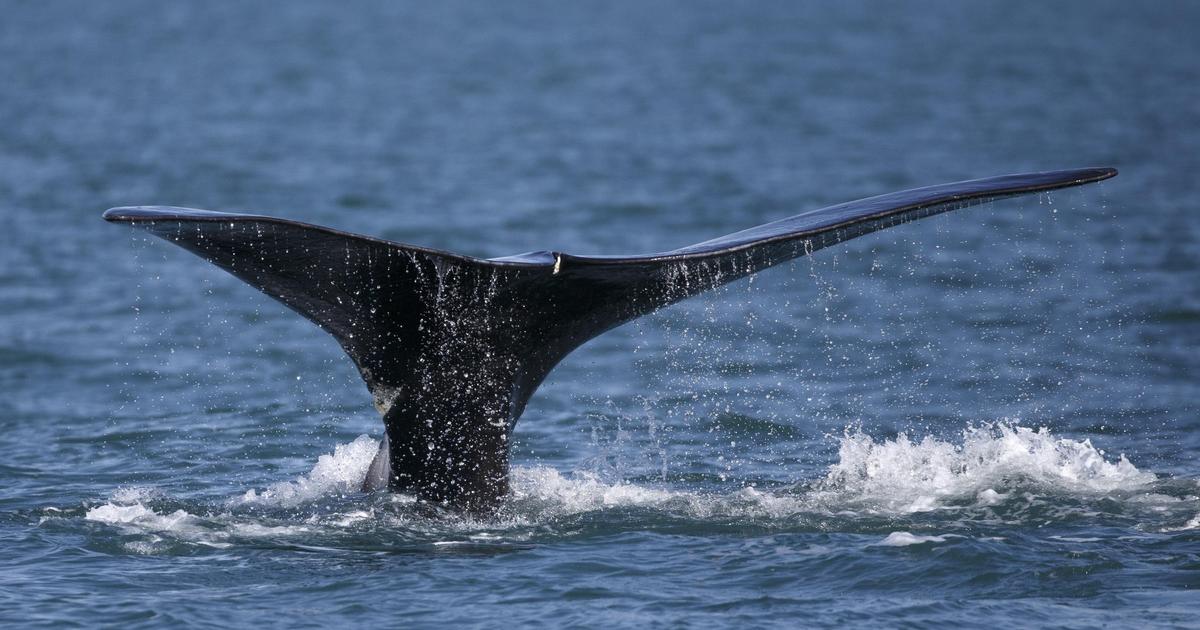At least eight North Atlantic right whales have died this summer — about 2% of the endangered marine mammal‘s total population. All of the animals have been found in Canadian waters, and alarmed scientists are working to confirm the causes of the deaths.
While eight deaths have been confirmed, three more whales are currently entangled in fishing gear, so the number could increase, according to Sean Brilliant, a senior conservation biologist of marine programs at the Canadian Wildlife Federation
There are only about 411 right whales on Earth. All eight deaths have occurred in the last two months, a disastrous number reminiscent of the alarming amount of right whale deaths in 2017.
“The species is currently in a steep decline, but there is a tremendous amount attention and interest in reducing these incidental deaths,” Brilliant told CBS News. “I am optimistic we can stop this decline, but there is a lot of work to do and a lot of tough decisions to make.”
Brilliant said one of the major and most apparent reasons for the recent decline is the increase in human activities like fishing and shipping that have not accommodated to the whale population, which has faced a significant decline in reproduction.
According to Heather Pettis, an associate scientist at the Anderson Cabot Center for Ocean Life at the New England Aquarium, all eight whale deaths occurred between June 4 and July 18, and they may not be the only ones.
“It is important to note that these are the mortalities that we have detected,” she told CBS News. “We believe that we document only 40-50% of mortalities due to carcasses sinking and/or being in areas where there are no surveillance efforts. So the reality is that it is highly likely that we have lost more than 2 percent of the population this year.”
So far, necropsies have been performed on five of the animals. Three of those deaths were attributed to vessel strikes and the other two are pending analyses, Pettis said.
The right whale population has been declining since 2010, and there are fewer than 100 reproductive females left in the population. According to a recent study, not one adult or juvenile right whale died of natural causes between 2003 and 2018.
Michael Dwyer / AP
“At the mortality rates we are seeing, this population could become functionally extinct within the next 20 years,” Pettis said. “With that said, this is a resilient species and researchers have no doubt that the species can recover if we stop killing them at unsustainable rates.”
Canada’s Department of Fisheries and Oceans announced a plan in February to protect North Atlantic right whales from vessel strikes and fishing gear entanglement. While the government had success in 2018, citing no whale deaths in Canadian waters, their actions were only temporary and subject to change.
Last week, a coalition of lawmakers and whale experts presented a document asking the U.S. Congress to pass the Save the Right Whales Act, sponsored by U.S. Rep. Seth Moulton of Massachusetts. The bill would provide $5-million per year for 10 years to find ways to protect the animals, CBS Boston reports.
Scientists have a few recommendations for altering human activity to help the population recover. Fishing gear could be modified to reduce the severity and lethality of entanglements. Additionally, the implementation of ropeless fishing technology and vessel speed restrictions in whale habitats could remove some mortality pressures on the species.
But Pettis cautions that action must be taken sooner rather than later, as the species is nearing extinction. “We don’t have another 20 years to fix this – the population doesn’t have that much time.”














Commentary: Bry on why mental health, drug issues must be addressed in dealing with homelessness